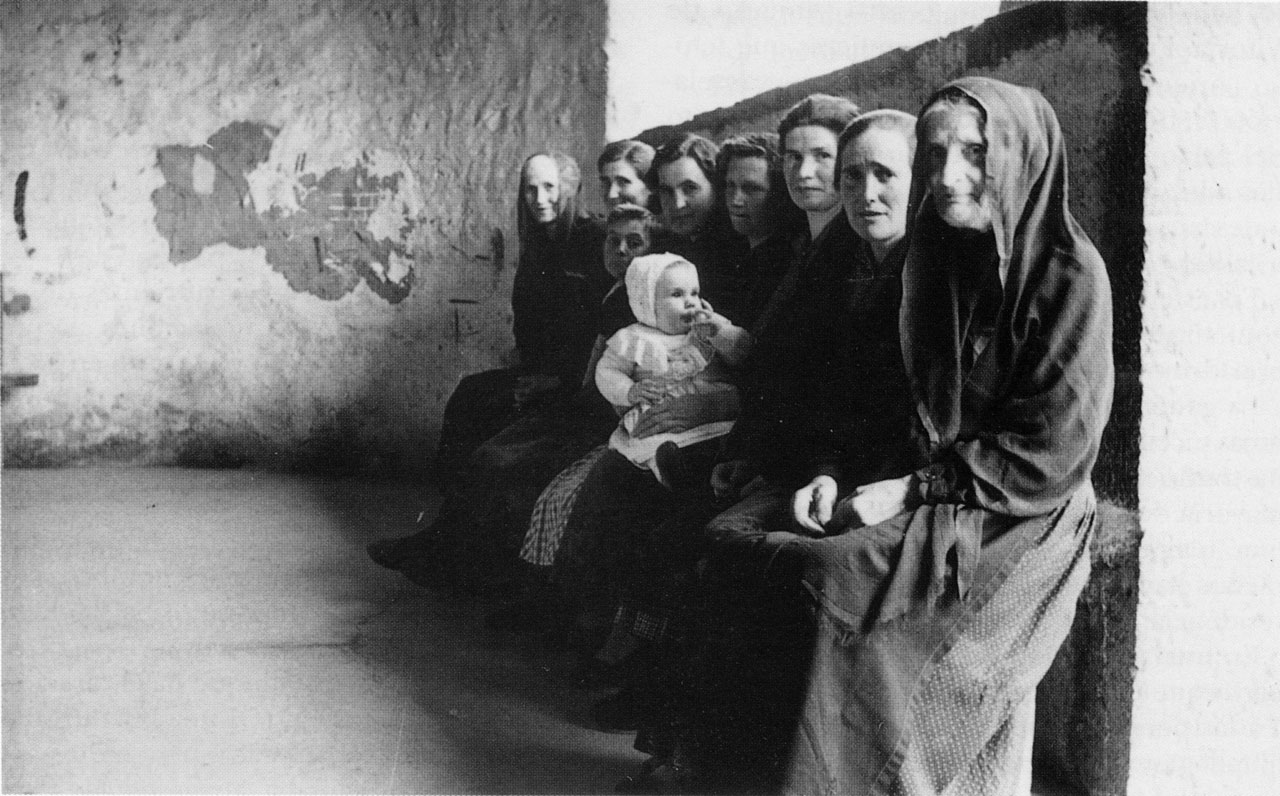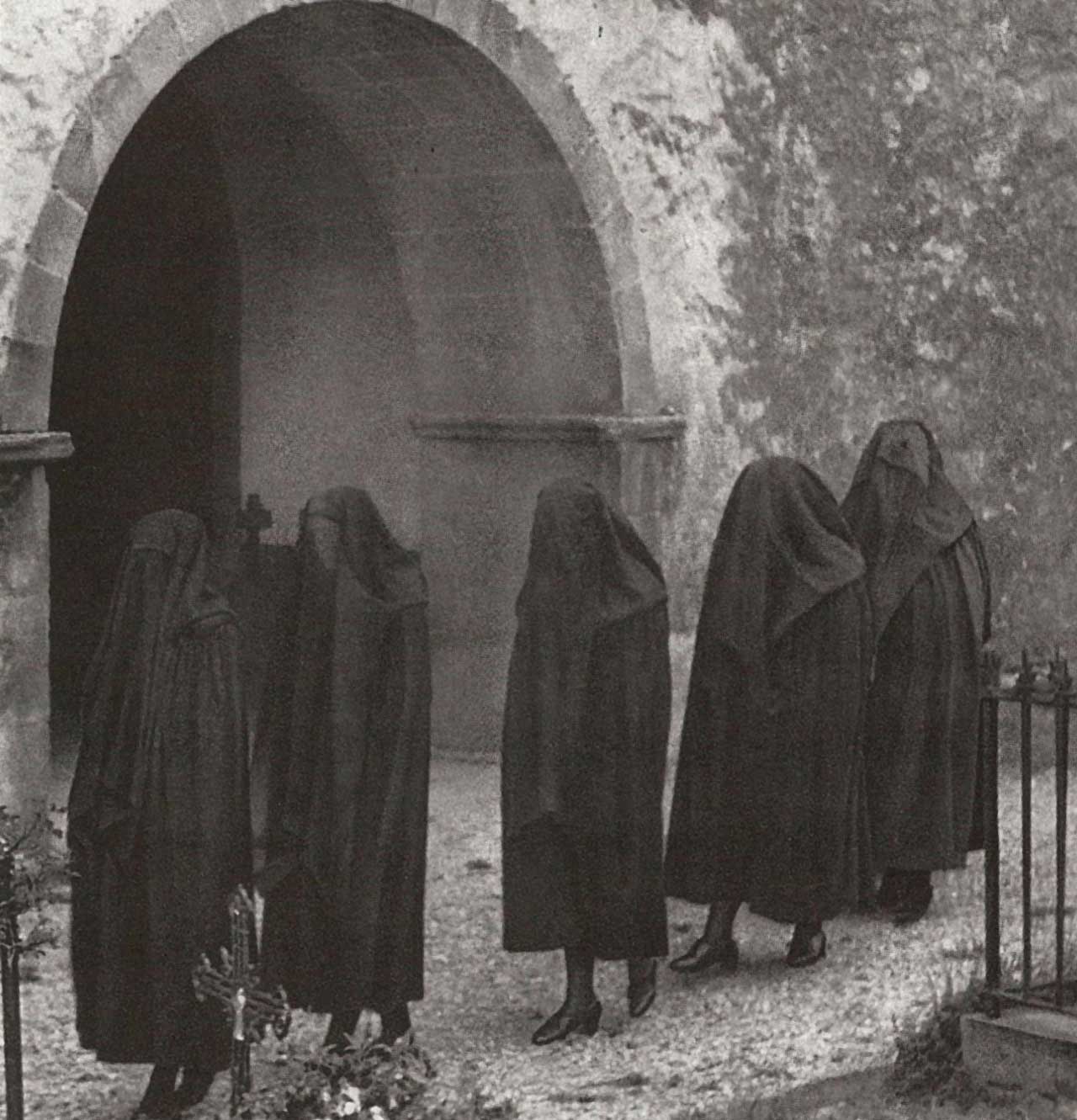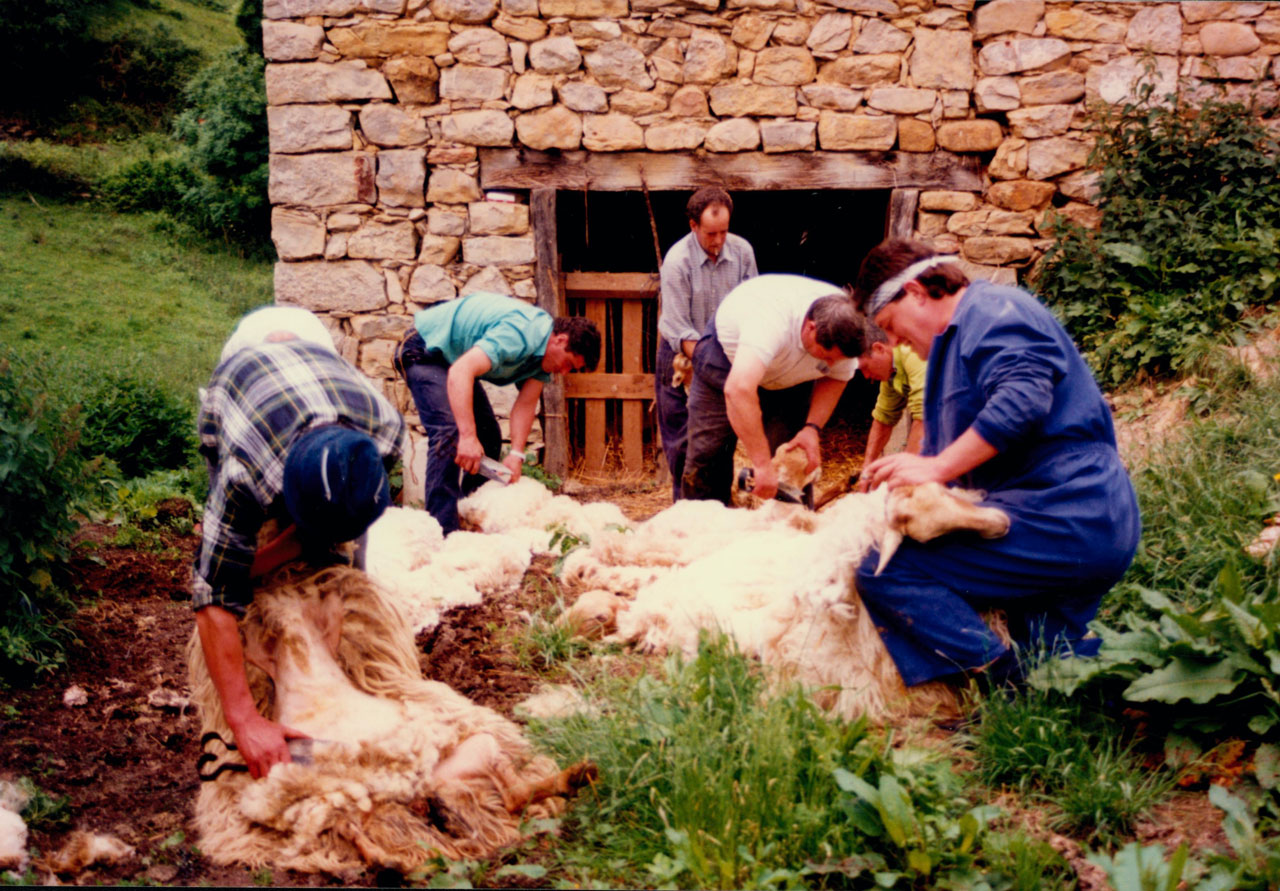Diferencia entre revisiones de «Main Page/en»
De Atlas Etnográfico de Vasconia
| Línea 92: | Línea 92: | ||
It consisted of rolling a metal or wooden hoop along using a wire rod with a hook at its end to steer or move it.|]==== | It consisted of rolling a metal or wooden hoop along using a wire rod with a hook at its end to steer or move it.|]==== | ||
| − | ====[/atlas/juegos/A-chorro-morro.jpg|Leapfrog jumping. Source: Iñigo Irigoyen, José. Folklore Alavés. Vitoria-Gasteiz: Chartered Government of Álava, 1949.|''Astoka'' <br />One or more participants bend down in a position that is usually called a frog and the others jump over them.|| | + | ====[/atlas/juegos/A-chorro-morro.jpg|Leapfrog jumping. Source: Iñigo Irigoyen, José. Folklore Alavés. Vitoria-Gasteiz: Chartered Government of Álava, 1949.|''Astoka'' <br />One or more participants bend down in a position that is usually called a frog and the others jump over them.||]==== |
| − | ====[/atlas/juegos/A-chorro-morro.jpg|Vegetal clothing and accessories. Egozkue (N), 1967. Source: José Zufiaurre, Etniker Euskalerria Groups.|Akerrak adarrak okerrak ditu, <br />adarrak okerrak akerrak ditu, <br />okerrak adarrak akerrak ditu. <br /><br />''Tongue-twister''|| | + | ====[/atlas/juegos/A-chorro-morro.jpg|Vegetal clothing and accessories. Egozkue (N), 1967. Source: José Zufiaurre, Etniker Euskalerria Groups.|Akerrak adarrak okerrak ditu, <br />adarrak okerrak akerrak ditu, <br />okerrak adarrak akerrak ditu. <br /><br />''Tongue-twister''||]==== |
| − | ====[/atlas/juegos/A-enfermeras-Getxo-1993.jpg|Doctors and nurses. Getxo (B), 1993. Source: Jon Elorriaga, Etniker Euskalerria Groups.|Txikia banintzen, handia banintzen, maiatzerako burutu nintzen. <br />''Riddle''|| | + | ====[/atlas/juegos/A-enfermeras-Getxo-1993.jpg|Doctors and nurses. Getxo (B), 1993. Source: Jon Elorriaga, Etniker Euskalerria Groups.|Txikia banintzen, handia banintzen, maiatzerako burutu nintzen. <br />''Riddle''||]==== |
| − | ====[/atlas/juegos/A-chorro-morro.jpg|Group of children. Zeanuri (B), 1920. Source: Labayru Fundazioa Photograhic Archive: Felipe Manterola Collection.|Children in the traditional society, both in towns and in countryside, only really had the toys that they made themselves. Games were more common than toys, and the latter were just a basis for the former.|| | + | ====[/atlas/juegos/A-chorro-morro.jpg|Group of children. Zeanuri (B), 1920. Source: Labayru Fundazioa Photograhic Archive: Felipe Manterola Collection.|Children in the traditional society, both in towns and in countryside, only really had the toys that they made themselves. Games were more common than toys, and the latter were just a basis for the former.||]==== |
| − | ====[/atlas/juegos/Ninos-con-patinetes-y-triciclos-en-la-Florida.jpg|Children riding scooters and tricycles at Florida Park. Source: Municipal Archive of Vitoria-Gasteiz: Ceferino Yanguas.|Humans play games throughout their lives; however, that activity has a clearly different role for children and adults.|| | + | ====[/atlas/juegos/Ninos-con-patinetes-y-triciclos-en-la-Florida.jpg|Children riding scooters and tricycles at Florida Park. Source: Municipal Archive of Vitoria-Gasteiz: Ceferino Yanguas.|Humans play games throughout their lives; however, that activity has a clearly different role for children and adults.||]==== |
| − | ====[/atlas/juegos/Pin-pin-zarramacatin-Carranza-1993.jpg|''Pin, pin, zarramacatín''. Carranza (B), 1993. Source: Luis Manuel Peña, Etniker Euskalerria Groups.|Honek arrautza ekarri, <br />honek erreten ipini, <br />honek gatza eman, <br />honek pixka bat probatu, <br />honek dena jan! <br /><br />''Game with fingers''|| | + | ====[/atlas/juegos/Pin-pin-zarramacatin-Carranza-1993.jpg|''Pin, pin, zarramacatín''. Carranza (B), 1993. Source: Luis Manuel Peña, Etniker Euskalerria Groups.|Honek arrautza ekarri, <br />honek erreten ipini, <br />honek gatza eman, <br />honek pixka bat probatu, <br />honek dena jan! <br /><br />''Game with fingers''||]==== |
| − | ====[/atlas/juegos/Beasaingo-haurrak-Egozkuen-1967.jpg|Children from Beasain in Egozkuen (N), 1967. Source: José Zufiaurre, Etniker Euskalerria Groups.|''Txori-ikasten'' <br />They played looking for birds’ nests and thus learnt about their habits, their songs, the way the nests were built…|| | + | ====[/atlas/juegos/Beasaingo-haurrak-Egozkuen-1967.jpg|Children from Beasain in Egozkuen (N), 1967. Source: José Zufiaurre, Etniker Euskalerria Groups.|''Txori-ikasten'' <br />They played looking for birds’ nests and thus learnt about their habits, their songs, the way the nests were built…||]==== |
| − | ====[/atlas/juegos/Lanzando-la-trompa-Getxo-1993.jpg|Playing with spinning tops. Getxo (B), 1993. Source: Jon Elorriaga, Etniker Euskalerria Groups.|Changes in the adult world are also necessarily reflected in the children’s world. It should not be forgotten that those changes also affect the world of beliefs, convictions and rites underlying many traditional games; many of which would be stripped of meaning, some would fall into disuse, others would persist and would adapt to the new circumstances.|| | + | ====[/atlas/juegos/Lanzando-la-trompa-Getxo-1993.jpg|Playing with spinning tops. Getxo (B), 1993. Source: Jon Elorriaga, Etniker Euskalerria Groups.|Changes in the adult world are also necessarily reflected in the children’s world. It should not be forgotten that those changes also affect the world of beliefs, convictions and rites underlying many traditional games; many of which would be stripped of meaning, some would fall into disuse, others would persist and would adapt to the new circumstances.||]==== |
| − | ====[/atlas/juegos/Jugando-al-corro-Larraul.jpg|Ring-a-ring o’ roses. Larraul (G). Source: Antxon Aguirre, Etniker Euskalerria Groups.|''Korruka'' <br />Al corro de las patatas, <br />naranjas y limones, <br />como comen los señores, <br />alupé, alupé, <br />sentadito me quedé.|| | + | ====[/atlas/juegos/Jugando-al-corro-Larraul.jpg|Ring-a-ring o’ roses. Larraul (G). Source: Antxon Aguirre, Etniker Euskalerria Groups.|''Korruka'' <br />Al corro de las patatas, <br />naranjas y limones, <br />como comen los señores, <br />alupé, alupé, <br />sentadito me quedé.||]==== |
| − | ====[/atlas/juegos/Asto-astoka-Zeanuri-1920.jpg|Leapfrog. Zeanuri (B), 1920. Source: Labayru Fundazioa Photograhic Archive: Felipe Manterola Collection.|—Arre, arre, <br />mandako, bihar Tolosarako, <br />etzi Panplonarako. <br />—Handik zer ekarriko? <br />—Zapata ta garriko. <br /><br />''Children’s chant''|| | + | ====[/atlas/juegos/Asto-astoka-Zeanuri-1920.jpg|Leapfrog. Zeanuri (B), 1920. Source: Labayru Fundazioa Photograhic Archive: Felipe Manterola Collection.|—Arre, arre, <br />mandako, bihar Tolosarako, <br />etzi Panplonarako. <br />—Handik zer ekarriko? <br />—Zapata ta garriko. <br /><br />''Children’s chant''||]==== |
| − | ====[/atlas/juegos/Jugando-al-corro-Larraul.jpg|Drawing of lots. Zeanuri (B), 1993. Source: Ander Manterola, Etniker Euskalerria Groups.|Txirristi-mirristi, gerrena, plat, <br />olio-zopa, kikili-salda, <br />urrup edan edo klik, <br />ikimilikiliklik. <br /><br />''Drawing lots chant''|| | + | ====[/atlas/juegos/Jugando-al-corro-Larraul.jpg|Drawing of lots. Zeanuri (B), 1993. Source: Ander Manterola, Etniker Euskalerria Groups.|Txirristi-mirristi, gerrena, plat, <br />olio-zopa, kikili-salda, <br />urrup edan edo klik, <br />ikimilikiliklik. <br /><br />''Drawing lots chant''||]==== |
| − | ====[/atlas/juegos/Pin-pin-zarramacatin-Carranza-1993.jpg|Watching over the child. Source: Novedades. Donostia, 1914.|Obabatxua lo ta lo, <br />zuk orain eta nik gero; <br />zeuk gura dozun orduren baten, <br />biok egingo dogu lo ta lo. <br /><br />''Lullaby''|| | + | ====[/atlas/juegos/Pin-pin-zarramacatin-Carranza-1993.jpg|Watching over the child. Source: Novedades. Donostia, 1914.|Obabatxua lo ta lo, <br />zuk orain eta nik gero; <br />zeuk gura dozun orduren baten, <br />biok egingo dogu lo ta lo. <br /><br />''Lullaby''||]==== |
Revisión del 15:00 10 feb 2020
Old and young husband and wife. Areatza (B), beginning of the 20th century. Source: Rubén de Las Hayas’ private archive.
House and Family in the Basque Country


House and Family in the Basque Country
The aim was to ensure that the family wealth, taken to be the farmstead and its belongings, would be passed on in full or only slightly diminished, and improved if possible, from parents to their offspring.
Family Diet in the Basque Country


Family Diet in the Basque Country
Maize, introduced in the 17th century, and potatoes, in the 19th, would revolutionise the Basque diet.
Children riding scooters and tricycles at Florida Park. Source: Municipal Archive of Vitoria-Gasteiz: Ceferino Yanguas.
Children’s Games in the Basque Country


Children’s Games in the Basque Country
Humans play games throughout their lives; however, that activity has a clearly different role for children and adults.
Traditional Medicine in the Basque Country


Traditional Medicine in the Basque Country
Verrugas tengo, verrugas vendo, aquí las dejo y me voy corriendo.Formula against warts
Rites from Birth to Marriage in the Basque Country


Rites from Birth to Marriage in the Basque Country
Ogiaren kurruskua mutikoa izan dadin. Eat up your crusts to have a boy.
Funeral Rites in the Basque Country


Funeral Rites in the Basque Country
Sorrow was expressed by wearing mourning.
Traditional sheep shearing. Carranza (B), 1998. Source: Miguel Sabino Díaz, Etniker Euskalerria Groups.
Livestock Farming and Shepherding in the Basque Country


Livestock Farming and Shepherding in the Basque Country
Grullas p’arriba, pastor buena vida, Grullas p’abajo, pastor más trabajo.When cranes fly north, life is easier for shepherds, when they fly south, work is harder for shepherds.
Agriculture in the Basque Country


Agriculture in the Basque Country
Selecting seeds has always been a fundamental activity. The best seeds were chosen from each harvest, and they were then stored and used for the next sowing season.








